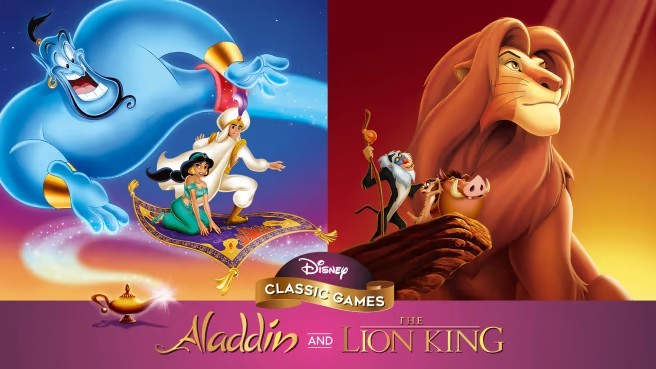
In the bustling city of Lagos, Nigeria, lived a young boy named Olu. He was ten years old, with bright eyes and a curiosity that seemed endless. Every evening after school, Olu would hurry home to watch his favorite Disney movies. His grandmother, Mama Adeola, would shake her head and smile, remembering her own childhood filled with traditional Yoruba tales and folklore.
One evening, as the sun set and painted the sky with hues of orange and pink, Olu sat eagerly in front of the television. The movie for the night was “The Lion King.” Mama Adeola, intrigued by her grandson’s fascination, decided to join him. As the movie played, Olu’s eyes were wide with excitement, and he barely noticed when his grandmother began to speak.
“Do you know, Olu,” Mama Adeola said, “that we have our own stories of animals and bravery in Africa?”
Olu nodded, his eyes still glued to the screen. “Yes, Mama, but I like Simba. He’s so brave and strong!”
Mama Adeola chuckled softly. “Simba is indeed brave. But bravery and strength are found in many places, my dear. Do you know the story of Anansi the Spider?”
Olu shook his head. “Who is Anansi?”
“Anansi is a clever spider from our own stories,” Mama Adeola explained. “He is known for his intelligence and wit. He teaches us that sometimes, being smart is more important than being strong.”
As the weeks went by, Olu found himself torn between the colorful world of Disney and the rich heritage of his own culture. He loved the adventures of Simba, Ariel, and Aladdin, but he also began to appreciate the tales of Anansi, Shaka Zulu, and the wise tortoise from Ghanaian folklore, whom his grandmother would tell him about.
One day at school, Olu’s teacher, Mrs. Njeri, asked the class to write an essay about their favorite story and what they learned from it. Olu’s classmates wrote about Cinderella, Peter Pan, and Elsa from “Frozen.” Olu, however, decided to write about Simba and Anansi. He wanted to explore the similarities and differences between them, and how they both taught important lessons.
In his essay, Olu wrote about Simba’s journey from a carefree cub to a wise and responsible king. He explained how Simba learned the importance of facing his past and accepting his responsibilities. Olu admired Simba’s courage and sense of duty, but he also appreciated Anansi’s cleverness. He recounted how Anansi used his wits to outsmart larger and more powerful animals, showing that intelligence and creativity could be just as powerful as physical strength.
Mrs. Njeri was impressed by Olu’s essay. She asked him to read it aloud to the class. As Olu read, his classmates listened intently, many of them hearing about Anansi for the first time. They were fascinated by the spider’s clever tricks and the moral lessons embedded in his stories.
After class, Olu’s friend Kofi approached him. “I liked your story about Anansi,” Kofi said. “I think he is just as cool as Simba.”
Olu beamed with pride. “Thanks, Kofi! My grandmother tells me these stories. She says they are a part of who we are.”
Kofi nodded thoughtfully. “Maybe we can ask Mrs. Njeri to tell us more stories from our culture.”
The next day, Olu and Kofi approached Mrs. Njeri with their idea. She was delighted and decided to dedicate a portion of their weekly lessons to African folklore. The children were thrilled to learn about the clever hare from Tanzania, the brave Sundiata from Mali, and the wise Queen Makeda from Ethiopia.
As Olu grew older, he continued to enjoy Disney movies, but he also developed a deep appreciation for his cultural heritage. He understood that both Disney stories and African folklore had valuable lessons to teach. Simba taught him about bravery and responsibility, while Anansi showed him the power of wit and intelligence.
Olu realized that stories, whether from Disney or his own culture, played a crucial role in shaping his understanding of right and wrong. They helped him see that morality was not a rigid set of rules but a rich tapestry woven from different experiences and perspectives.
Years later, as Olu prepared to go to university, he reflected on his childhood and the lessons he had learned. He decided to study literature and anthropology, hoping to bridge the gap between different cultures through storytelling. He wanted to show the world that stories from all corners of the globe had the power to teach, inspire, and unite people.
Olu’s journey had come full circle. From a young boy enchanted by Disney, he had grown into a young man proud of his heritage and eager to share it with others. He understood that while Disney’s stories were magical and influential, the tales from his own culture were equally important. They provided a sense of identity and continuity, connecting him to his ancestors and their wisdom.
One day, as Olu prepared to leave for university, Mama Adeola handed him a beautifully bound book. It was a collection of African folktales, written in both English and Yoruba. “Take this with you, my dear,” she said. “Remember where you come from, and share these stories with the world.”
Olu hugged his grandmother tightly. “I will, Mama. I promise.”
As he walked away, the book tucked safely in his bag, Olu felt a deep sense of purpose. He knew that the stories of Simba and Anansi, Ariel and Queen Makeda, were all part of a larger narrative. They were threads in the fabric of humanity, each one adding its unique color and texture.
Olu’s heart was full of gratitude. He was thankful for the magic of Disney, which had sparked his imagination, and for the rich traditions of his culture, which had grounded him. He was ready to embark on a new adventure, armed with the stories that had shaped his understanding of the world and the values he held dear.
And so, with a heart full of stories and a mind open to learning, Olu set off to create his own tale, one that would blend the old with the new, and connect the past with the future.








